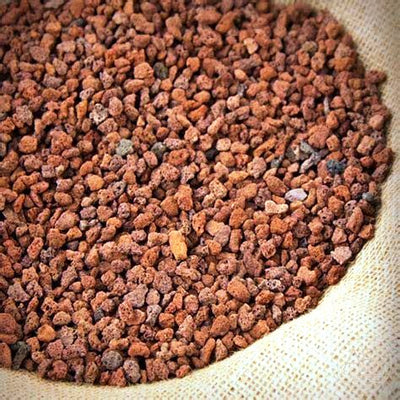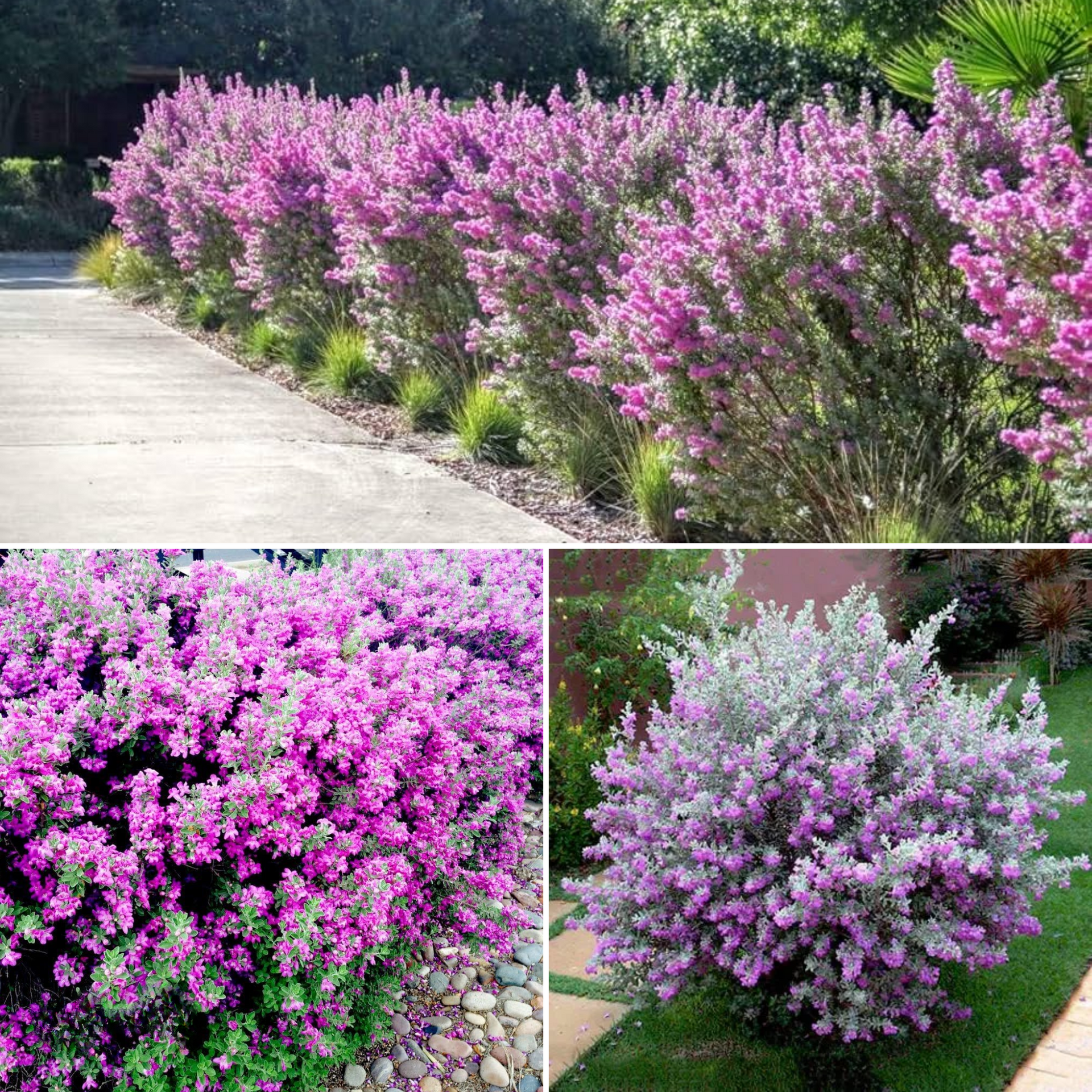
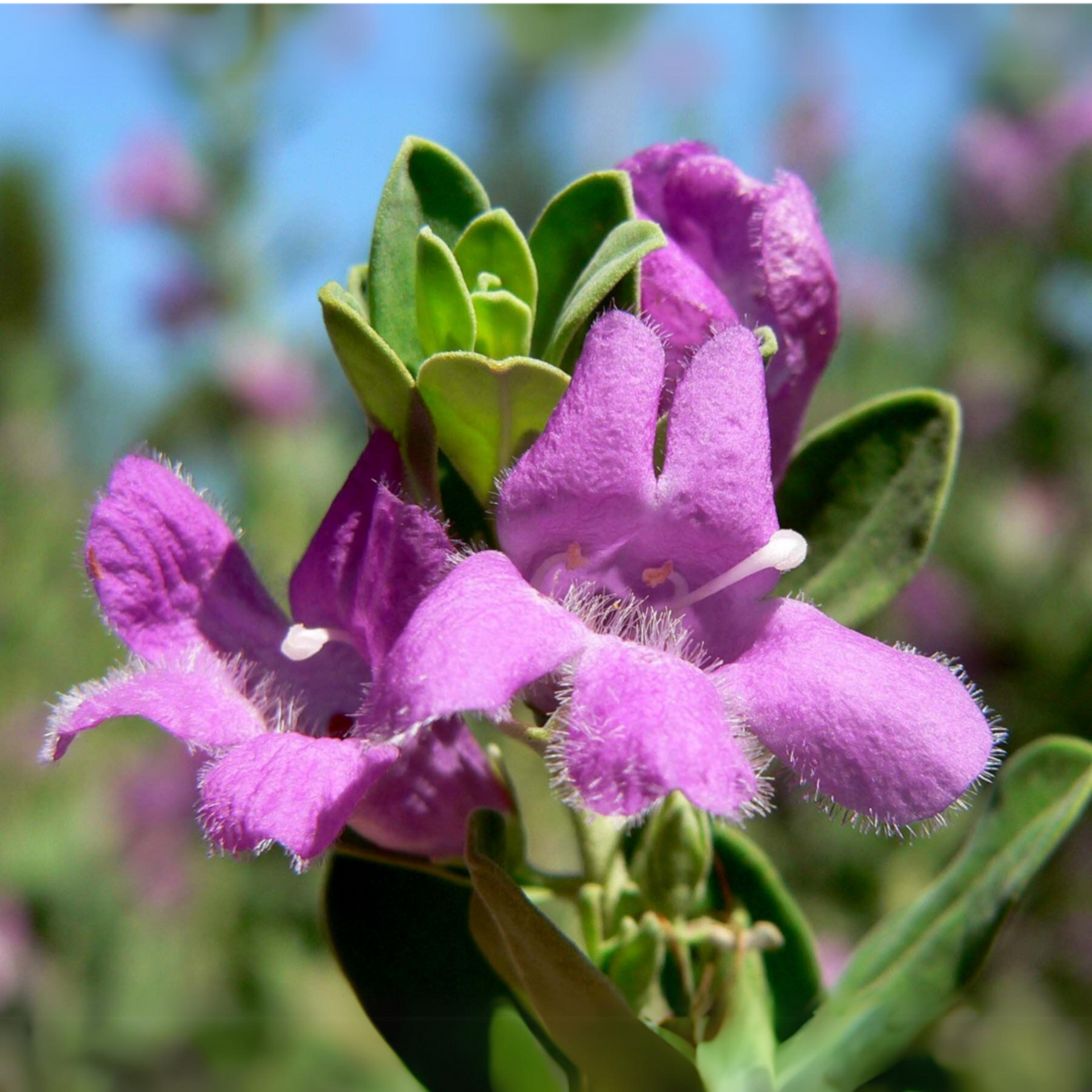
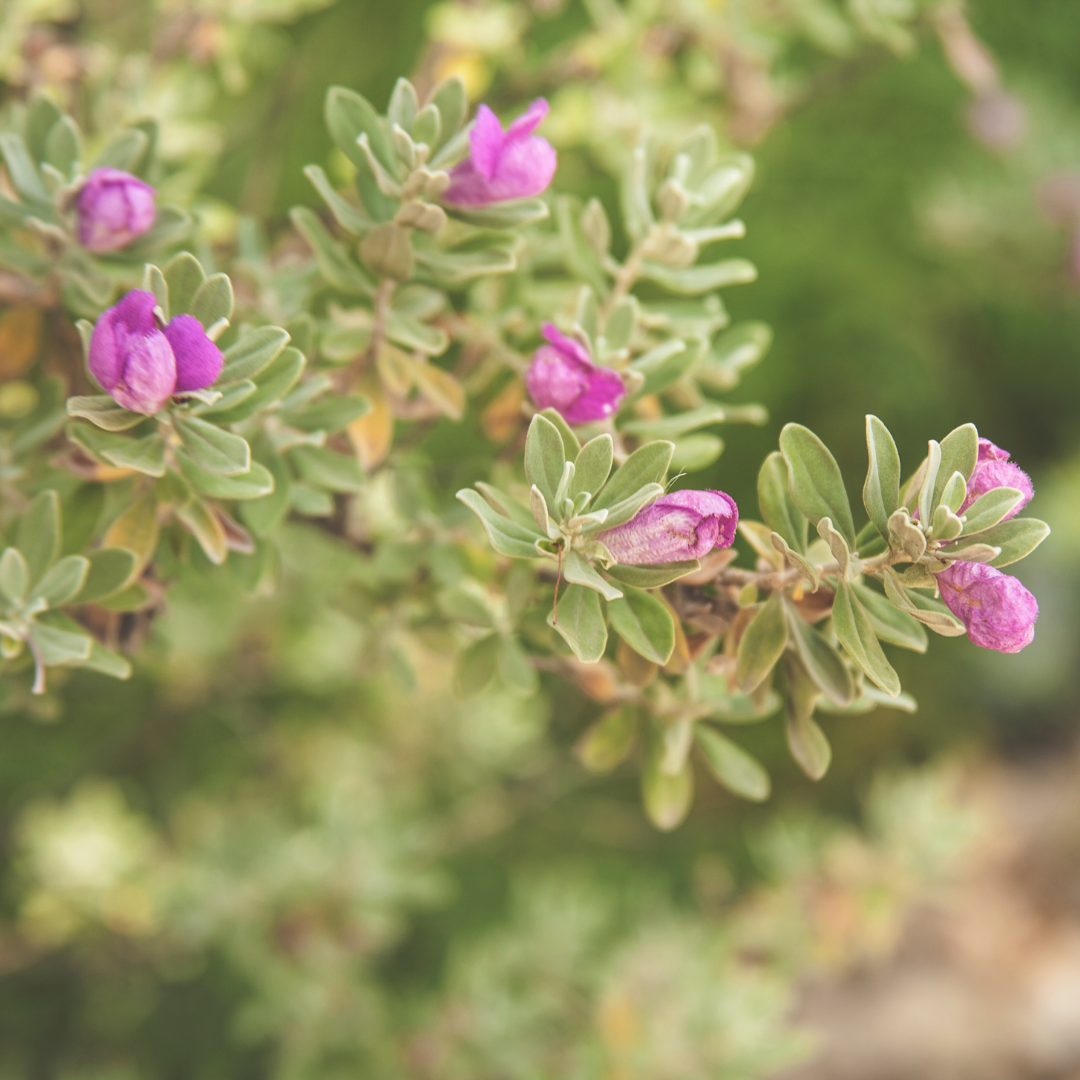

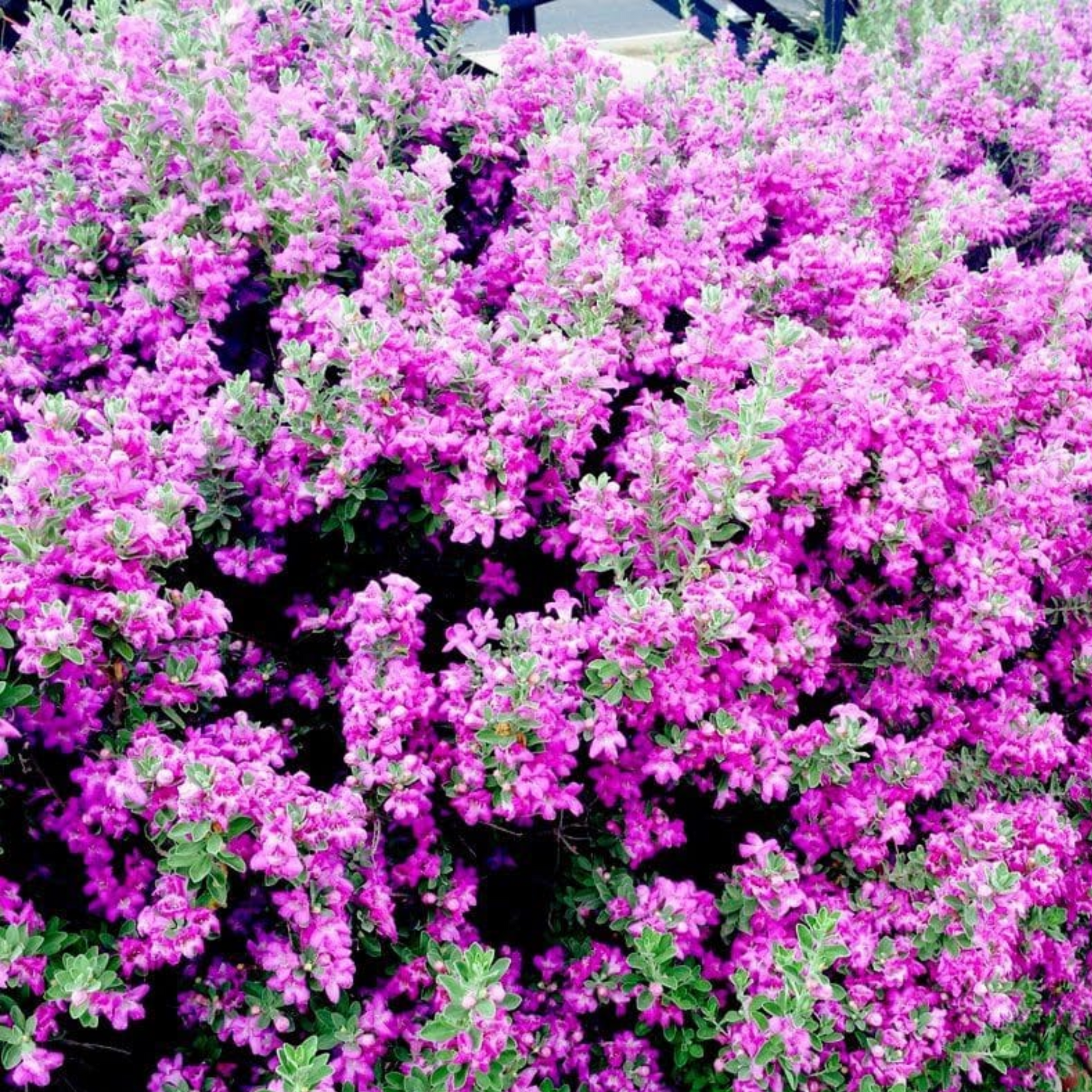
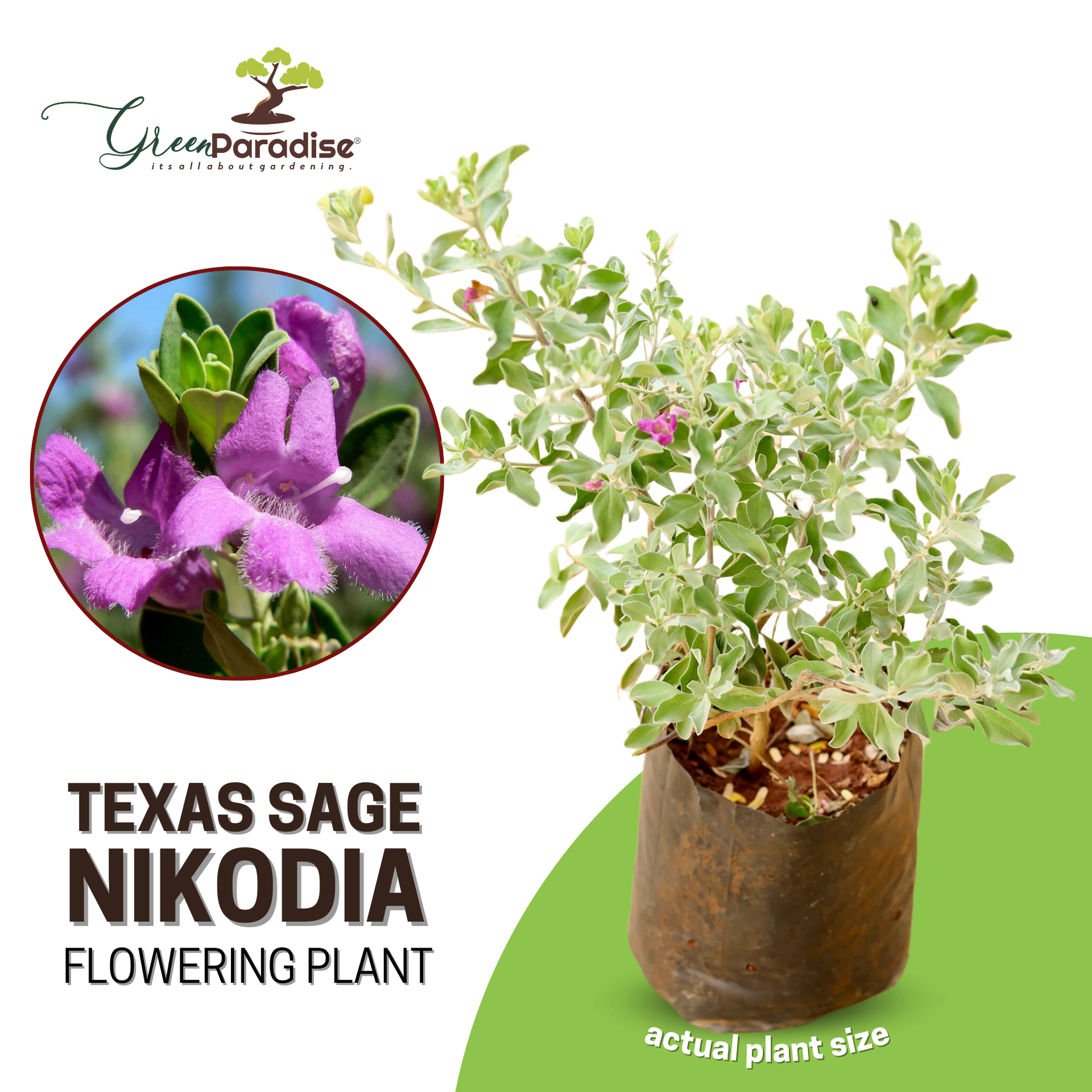
Nikotia Leucophyllum Texas Sage Live Plant
Guaranteed Safe Checkout
Unveiling the Mystique of the Texas
Sage Plant: Nature's Desert Gem
The Texas Sage plant, scientifically known as Leucophyllum frutescens, stands as a vibrant emblem of resilience amid the arid landscapes of the Lone Star State. With its stunning silver-green leaves and captivating purple blossoms, this hardy perennial has endeared itself to both Texan natives and green thumbs around the world. In this article, we embark on a journey to uncover the unique attributes and mystique of the Texas Sage plant, a true testament to nature's adaptive prowess.
A Symbol of Tenacity
- Native to the Chihuahuan Desert, the Texas Sage is an epitome of nature's ability to thrive under harsh conditions.
- Its silver-grey leaves are covered with fine hairs that reflect sunlight, reducing water loss through transpiration—a brilliant adaptation for the scorching Texan summers.
- This remarkable feature not only provides a cooling effect for the plant but also makes it a quintessential survivor in drought-prone regions.
Flowers that Mesmerize
- The Texas Sage's magnum opus is undoubtedly its striking flowers.
- While the plant's foliage is a sight to behold, it's the vivid, bell-shaped blooms that steal the show.
- These ethereal flowers, typically in shades of lavender, purple, or pink, appear after rain showers or in periods of high humidity.
- A curious trait of this plant is its ability to produce a spectacular floral display seemingly out of nowhere, turning arid landscapes into a canvas of color.
An Ecological Oasis
- Beyond its aesthetic appeal, the Texas Sage plant plays a crucial role in its ecosystem.
- Its nectar-rich flowers attract a myriad of pollinators, from bees to butterflies, providing sustenance for these vital species.
- Moreover, the plant's dense foliage offers a sanctuary for birds seeking shelter from the harsh sun and predators.
- It's a testament to the interconnectedness of nature, where every species, no matter how small, has a role to play in the grand tapestry of life.
Cultivation and Care
For those enticed by the Texas Sage's allure and keen to bring a piece of the Texan desert into their garden, cultivation can be a rewarding experience. Here are some key tips for growing and caring for this remarkable plant:
Location is Key:
Plant your Texas Sage in well-drained soil and a location that receives plenty of sunlight. This plant thrives in full sun, making it ideal for xeriscaping projects.
Minimal Watering:
One of the Texas Sage's most appealing qualities is its ability to withstand drought. Allow the soil to dry between waterings and water sparingly.
Pruning:
Prune the plant in late winter or early spring to shape it and encourage new growth. Avoid heavy pruning, as this can impede its natural form.
Fertilization:
Texas Sage plants are not heavy feeders. Use a low-nitrogen fertilizer in spring if needed, but avoid over-fertilization, which can lead to excessive leaf growth at the expense of flowers.
Protection from Frost:
In regions with occasional frost, cover your Texas Sage during cold snaps to prevent damage to tender new growth.
A Living Tribute to Texas
- In conclusion, the Texas Sage plant is a living testament to the strength and beauty that can be found in the most unlikely of places.
- Its silver foliage and vibrant blossoms are a reminder that even in the harshest environments, life can flourish with adaptability and resilience.
- This plant has not only captured the hearts of Texans but has also found admirers worldwide, showcasing the universal appeal of nature's wonders.
- So, the next time you find yourself in the arid landscapes of Texas, keep an eye out for the Texas Sage plant, a true desert gem that serves as a symbol of tenacity, a source of ecological sustenance, and a living tribute to the Lone Star State's natural beauty.
Unlocking the Secrets of Cultivating the Magnificent Texas Sage Plant
- When it comes to landscaping plants that effortlessly marry beauty with resilience, the Texas Sage plant stands tall in the Texan sun.
- Known for its vibrant purple blooms and silvery-green leaves, this native Texan shrub has become a favorite among garden enthusiasts not only in the Lone Star State but also in arid regions worldwide.
- If you're eager to add this stunning plant to your garden or maintain the one you already have, read on to discover the secrets of successful Texas Sage cultivation.
Choosing the Right Variety
- Before delving into the nitty-gritty of nurturing your Texas Sage, it's crucial to select the right variety.
- There are several species within the Leucophyllum genus, but the two most commonly cultivated in Texas are Leucophyllum frutescens (commonly known as Texas Sage or Texas Ranger) and Leucophyllum candidum (commonly known as Ash Bush or Purple Sage).
Texas Sage (Leucophyllum frutescens) is the more prevalent choice, known for its striking silver-green foliage and vivid purple flowers that often make it the showstopper in many gardens.
Ash Bush (Leucophyllum candidum), on the other hand, boasts lighter, silver leaves and delicate lavender to purple flowers. It’s an excellent option if you prefer a more subtle look.
Sunlight – Texas Sage’s Best Friend
- Texas Sage plants are true sun worshippers.
- They thrive in full sunlight and require at least 6 to 8 hours of direct sunlight each day.
- If your garden lacks this, your Texas Sage might not bloom as vibrantly, and its overall health could be compromised.
Well-Draining Soil is Key
- Another vital factor in growing a healthy Texas Sage plant is the type of soil it's planted in.
- These shrubs prefer well-draining soil, as they don't tolerate excessive moisture well.
- Sandy or gravelly soils are ideal, as they prevent water from accumulating around the roots.
- To further improve drainage, consider adding some organic matter, like compost, to your soil.
Watering – Less is More
- Once established, Texas Sage plants are remarkably drought-tolerant.
- In fact, overwatering is a common mistake that can lead to root rot and other issues.
- During the plant's first year, water it more frequently to help it establish a deep root system.
- Afterward, you'll only need to water during prolonged dry spells.
Pruning for Shape and Health
- Texas Sage plants can grow quite bushy if left unchecked.
- To maintain a tidy appearance and encourage better air circulation, periodic pruning is necessary.
- The best time for this is in late winter or early spring, just before the new growth starts.
- Be sure to use sharp, clean pruning shears and remove dead or diseased branches.
Fertilizing Sparingly
- Texas Sage is a low-maintenance plant, and this extends to fertilizing.
- In most cases, these plants can thrive without any additional fertilization.
- However, if your soil lacks essential nutrients, you can apply a slow-release, balanced fertilizer in the spring.
- Remember, it's better to under-fertilize than over-fertilize, as excessive nutrients can harm the plant.
Pest and Disease Management
- Texas Sage is generally resistant to pests and diseases, making it a hardy addition to your garden.
- However, like all plants, it's not entirely immune.
- Keep an eye out for common garden pests such as aphids and spider mites, and address any infestations promptly with organic controls if needed.















